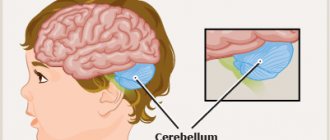What are drugs
Drugs are chemical substances that negatively affect the central nervous system and disrupt a person’s physical and mental health. Drugs are not only of synthetic origin, but also of natural origin.
Prohibited substances are used in various ways:
- Smoking;
- Orally;
- Injections;
- Inhalation.
Smoking drugs through a light bulb is a common method of use among experienced drug addicts.
After taking almost any drug, a person experiences a short-term feeling of bliss, which, after the effect of the dose wears off, is replaced by unpleasant symptoms, in order to stop them there is a need to use it again. But this is true in cases where there is already an addiction. If a person has just used it for the first time, he may decide to repeat the use in order to feel euphoria again. It is important to note that drugs cause rapid physical and psychological addiction.
There are psychoactive substances (surfactants) that are enough to be used 1-2 times to form an addiction (desomorphine, popularly known as “crocodile”).
Narcotic substances were known in ancient times; people used them to perform rituals and treat patients. But after the advent of synthetic drugs, which are mainly produced in artisanal conditions, the problem became widespread.
Distribution in the world
USA
The query "Drug Addiction in the United States" redirects here. A separate article should be created on this topic.
| This section is not completed. You will help the project by correcting and expanding it. |
Drug use in the United States, particularly opium, marijuana and alcohol, has a long history with repeated attempts at prohibition. Of this range of drugs, marijuana is the youngest. The practice of using marijuana spread to the United States at the beginning of the 20th century and was presumably introduced by immigrants from Mexico[6].
In 2020, a craze for prescription drugs among US residents was recorded: almost 70% of Americans take one prescription drug, more than 50% take two, 20% take five or more[8].
Russia
Main article: Drug addiction in Russia
UNODC documents indicate that Russia appears to be the largest heroin market in Europe[9][10]. The total number of people who use drugs ranges from 3 to 4 million, a third of whom are heroin abusers [ source not specified 2439 days
].
In Russia, according to official statistics, as of 2009, 503 thousand people are registered with dispensaries [ source not specified 2439 days
], and the actual number of drug addicts is estimated at 2-2.5 million[11].
According to the Federal Drug Control Service, every day in Russia 80 people die from drug use, and more than 250 people become drug addicts[12].
At the same time, in Russia, the role of law enforcement agencies in the fight against drug addiction is great - they intercept up to 40% of heroin entering the country[13]. At least 10 kg of heroin are seized every day in the country, which, according to some estimates, is the daily injection rate for more than several million drug users[14].
In March 2020, the Russian Ministry of Internal Affairs proposed not to allow drug addicts to work in hazardous industries, and also to deprive them of the right to drive vehicles[15].
Ukraine
Main article: Drug addiction in Ukraine
| This section of the article has not been written. According to the plan of one or more Wikipedia contributors, a special section should be located in this place. You can help by writing this section. |
Drug classification
Drugs are classified according to various parameters.
By the nature of the active substance:
- Natural origin. Some plants (poppy, hemp) contain narcotic substances, and certain mushrooms also contain surfactants. To take such drugs, first of all, “craftsmen” process them, then use them as smoking mixtures and decoctions.
- Synthetic origin. Such drugs are obtained as a result of chemical synthesis (LSD, amphetamine and others).
Method of influence on the body:
- Calming of the central nervous system. These include barbituric acid derivatives, tranquilizers, natural opium or its synthetic derivatives (heroin, codeine, methadone). After taking such drugs, a person feels rapid relaxation, he becomes comfortable mentally and physically.
- CNS stimulants. Some drugs amphetamine, caffeine, cocaine, ecstasy excite the nervous system. At the initial stage of taking them, there is a surge of energy, and even an improvement in mental abilities and an increase in physical capabilities. Drug intoxication is expressed in increased sexual desire, lightness in the body and a feeling of euphoria. However, regular use causes impotence, lethargy and other unpleasant symptoms.
- Hallucinogens. Certain drugs cause hallucinations. Such narcotic substances are found primarily in mushrooms and cacti; they were used in ancient times during various magical rituals. Nowadays, hallucinogens of synthetic origin are being developed, for example, the famous LSD. They do not cause physical dependence, however, in order to get into the world of illusions, a person will always strive to try them again.
Content
- 1 Drug classification and diagnosis
- 2 Stages of development
- 3 Characteristics
- 4 Addiction
- 5 Drugs
- 6 Drug addiction and society
- 7 Worldwide distribution 7.1 USA
- 7.2 Russia
- 7.3 Ukraine
- 8.1 Forecast for the development of the situation
- 9.1 Expertise
Groups of narcotic drugs
Prohibited substances are divided into several groups based on their pharmacological properties:
- Opiates. These include all drugs of natural origin and synthetic drugs (heroin, morphine, methadone, codeine, tramadol).
- Amphetamine series, synthetic substances that stimulate the nervous system (methamphetamine, cocaine);
- Tranquilizers (diazepam, phenazipam);
- Hallucinogens (LSD, psilocybin, mescaline);
- Mildly dangerous recreational drugs (MDMA);
- Dissociatives (calypsol, ketamine);
- Designer, artificially produced (mephedrone).
Effect on the cardiovascular system
Drugs inhibit vascular activity and cause a decrease in blood pressure, as a result of which the heart rate decreases. This effect occurs with substances that are part of the opiate group, such as morphine, heroin or codeine. They massively inhibit the activity of blood vessels and the heart, and negatively affect the functions of the brain center necessary to support the circulatory system. After the weakening of cardiac activity by opiates, the heart cannot pump blood normally, resulting in oxygen starvation of the organs, disruption of the functioning of the heart muscle, and coronary diseases. Within just a few months of taking opiates, the heart becomes completely worn out.
What are the consequences of taking drugs?
- Drugs accumulate in the tissues of the body, leading to serious health problems.
- Prohibited substances kill minerals and vitamins, which contributes to the deterioration of the immune system.
- Impact on the mind, leads to mental disorders.
Whatever type of drugs they are, they have a detrimental effect on a person’s mental and physical health. The smartest thing to do is never try them, but if addiction already exists, it is important to rush to a drug treatment clinic. The number of drug addicts is growing every year, despite the fact that medicine has made great strides forward. Unfortunately, drug addicts rarely admit that they are sick; they hide their addiction in every possible way, mistakenly assuming that they can stop using on their own.
How to recognize a drug addict - the main signs
Obvious signs of drug addiction do not appear immediately. Often, relatives notice a loved one’s illness only when mental and physical health is severely impaired, that is, in the final stages. As is known, drug addiction is better treated at an early stage of the disease; in later stages, it is not always possible to completely restore the health of the addict. It is important to notice the signs of drug addiction as early as possible and promptly contact a drug treatment clinic.
First symptoms:
- In the speech of the “suspect”, slang words appeared, the concept of which is not known to ordinary people.
- Redness or graying of the skin on the face and hands.
- Problems with sleep, a person may not sleep for days or cannot be woken up.
- Personal belongings contain paraphernalia for taking drugs (syringes, rubber bands for tightening veins, ampoules).
- Mood swings.
- Excessive activity or, on the contrary, constant lethargy.
- The pupils stop responding to lighting, become narrow or, on the contrary, wide.
At the first stage of the disease, a person may become irritated for no reason, and his social circle changes. At the second stage of the disease, a person changes externally and internally. A drug addict is characterized by an unkempt appearance and specific odors. At the third stage, complete degradation of the personality occurs. You can see marks from injections, rotten teeth, dirty hair.
Why are groups of anonymous drug addicts created?
Narcotics Anonymous groups are necessary so that patients can help each other and learn from the mistakes of others. Participation in such groups gives drug addicts the strength to start living a full life.
Typical symptoms
Signs of withdrawal in drug addicts vary in severity and severity of manifestations. But there is a typical clinical picture that is typical in most cases. These signs of withdrawal from drug addiction, according to narcologists, are common and characteristic of all types of withdrawal.
Basic (typical) signs of drug withdrawal
First signs
They are more reminiscent of the familiar flu condition. At the same time, the sufferer seeks to retire, becoming uncommunicative and withdrawn. Completely exhausted, a person spends all the time in bed, trying to warm up and get rid of severe chills. This condition is accompanied by:
- runny nose;
- fever;
- convulsions;
- weakness and lethargy;
- confusion;
- the appearance of profuse sweating;
- worsening mood, irritability;
- excruciating discomfort felt in the body.
After some time, painful nausea and vomiting add to these symptoms. Prolonged diarrhea occurs, which leads to dehydration. Excruciating joint and muscle pain begins.
Sharp pain impulses at the beginning of withdrawal symptoms force the sufferer to look for positions that relieve painful tension. A person literally rushes around the bed, unable to bear the excruciating muscle spasms.
While in this state, a person can roll on the floor and hit objects with his whole body. In this case, the person does not feel pain at all. This condition can cause serious physical injury. A symptom common to all types of withdrawal symptoms is sleep disturbance. Such a person’s sleep is superficial, very disturbing, accompanied by nightmares .
Psychopathic signs
Drug withdrawal occurs against the background of deep depression. A person completely loses interest in the people around him and life itself. He completely withdraws into himself and suffers from insomnia. The nightmares that come to him during a short sleep continue to torment him even after waking up, having the appearance of persistent hallucinations.
The sufferer perceives the people around him as demons and terrible entities, which (as he sees it) are the causes of all suffering. This pushes the drug addict to take aggressive and dangerous actions. Sometimes close people, family members are mistaken for demons: parents, spouse, children.
Withdrawal symptoms are most pronounced when using opiate drugs.
General signs of a psychopathic level include the following manifestations:
- hallucinations, delusions;
- high anxiety;
- unpredictability of reactions;
- increased level of anxiety;
- uncontrollable outbursts of rage and aggression.
All somatic manifestations arise gradually and go away in the reverse order. Sometimes (if there is an addiction to certain types of ketamine-type drugs), individual manifestations are added to the general symptoms. They are expressed in the impoverishment of facial expressions, chaotic tremor of the facial muscles.
Somatic signs
Characteristic, typical somatic manifestations of withdrawal syndrome include excruciating pain in the joints and muscles. To understand how withdrawal occurs in drug addicts, you should also know the initial somatic symptoms that precede abstinence. And this is prolonged sneezing, yawning, dilated pupils.
Later they are joined by muscle soreness. They are driven by a painful spasm, and the person experiences unbearable pain. The condition is rapidly deteriorating, and the following symptoms are observed:
- chills;
- blood pressure surges;
- dizziness;
- nausea and vomiting;
- aches throughout the body;
- gastrointestinal problems (usually diarrhea);
- increased salivation and sweating;
- severe nausea, accompanied by abdominal pain.
Types of drug addicts
For almost everyone, drug addiction begins the same way. People, wanting to escape from problems, dreaming of relaxation, try various prohibited substances, often not noticing how they become dependent on them.
Main types of drug addiction:
- Opium addiction
- Spice drug addiction
- Drug abuse
- Polydrug addiction
- Amphetamine addiction
- Mephedrone addiction
- Cocaine
- Hallucinogen abuse
- Salt addiction
- Abuse of lyrics
- Methadone addiction
- Desomorphine drug addiction
Withdrawal from a drug addict
If a dependent person does not take the next dose in a timely manner, painful symptoms of withdrawal syndrome (drug withdrawal) will begin to appear. Withdrawal symptoms are divided into physical and mental.
Physical manifestations of withdrawal
- fever
- chills
- limb tremors
- vomiting and nausea
- excruciating headaches
- convulsive manifestations
- runny nose
- tearfulness
- muscle pain
How does a drug addict feel during withdrawal?
- irritability
- insomnia
- panic attacks
- aggression
- strong desire to use
Symptoms of withdrawal syndrome will last for a very long time if the drug addict is not given proper help. The duration of withdrawal symptoms depends on the length of time the drug is used and the type of surfactant, but generally the duration of withdrawal varies from 2 to 5 weeks. During withdrawal, the addict can neither eat nor sleep.
Cocaine overdose
Overdose often occurs due to the addict losing control of the amount of drug taken in pursuit of elusive sensations. The lethal dose of cocaine for the average person who does not use regularly is 1.2 grams, but depending on the individual characteristics of the body, it can be reduced to 20 mg. For comparison: a single street dose is 15–60 mg; and the dose to obtain the effect of the drug cocaine is defined as 1.5 mg of pure substance per kg of human weight.
Symptoms
The symptoms of an overdose are quite characteristic, in contrast to the signs of cocaine intoxication. When the body is poisoned by cocaine, the following symptoms first appear:
- dry mouth
acute headache;
- strong thirst;
- dry mouth;
- cyanosis of the skin;
- sweating
Then they develop:
- drowsiness, the drug addict wants to sleep, but cannot fall asleep;
- muscle cramps in the arms and legs;
- increased body temperature;
- dehydration, dry mucous membranes of the mouth, nose, eyes;
- heart failure, chest pain.
Cocaine causes severe vasoconstriction, which leads to heart attacks, strokes, acute renal failure, coma, and death from cardiac or respiratory arrest.
Sometimes excessive stimulation of the nervous system and seizures and convulsions develop. In severe overdoses, convulsive seizures lead to cardiac arrhythmias, cardiac arrest and death.
First aid
If there is the slightest suspicion that the victim has overdosed on cocaine, call 911 immediately. While waiting for the medical team to arrive, you should try to take the following actions.
- If a drug addict is in the stage of excitement, limit his movements so that he does not cause harm to himself or others. It is better to lay him down, ensuring normal ventilation of the lungs.
- If the drug enters the body by inhaling the powder, rinse the nasal cavity.
- If poisoning occurs when cocaine is ingested, rinse the stomach with plenty of water and give any adsorbent to drink (activated carbon, Polysorb MP and others).
- If the body temperature rises, wipe the victim with cool water and apply a cold compress to the forehead. You should not give the victim any medications to reduce the temperature - this will complicate the situation.
- If necessary, perform artificial respiration and chest compressions.
Overdose is treated in a hospital.
- If breathing stops, the trachea is intubated and connected to a ventilator.
- To reduce the excitability of the nervous system, an injection of sedatives is given - “Barbital-sodium”, “Barbamil”.
- To relieve spasms of blood vessels in the brain and heart muscle, nitroglycerin or amyl nitrite is prescribed.
- If poisoning occurs due to cocaine entering the stomach, then it is washed through a tube.
Psychological help
Drug addiction is a serious disease, the treatment of which requires an integrated approach to the problem. During treatment activities, an anonymous drug addict needs psychological support. First of all, due to the fact that most often the patient ends up in the hands of doctors, thanks to the efforts of relatives. However, treatment will be successful when the person himself sincerely wants to be cured.
Immediately after hospitalization in a drug treatment clinic, psychologists communicate with the addict. They help overcome the fear of treatment.
The psyche of an anonymous drug addict is disturbed; thoughts and desires can constantly change. He may want to get rid of his cravings for illegal substances. At the same time, it is difficult for him to imagine how to live without a “high.” The task of psychologists is to convince the drug addict that treatment is the only correct solution.
The help of a psychologist is necessary at every stage of the fight against the disease:
- Detoxification and relief of withdrawal symptoms
- Rehabilitation
- Recovery
Resocialization
Resocialization is the process of returning a former cocaine addict to normal everyday life in the family and in society. At this stage, he still needs support after being discharged from the rehabilitation center, because returning to society is full of temptations and stress. Resocialization takes place in the form of outpatient support. The former patient visits a drug treatment center, is periodically examined by a narcologist, and consults with a psychologist. At this stage, many recovered people attend support groups that are located at drug rehabilitation centers. Group classes are also held for relatives, which provide an opportunity to overcome codependency.
Rehabilitation centers for drug addicts: how to choose
The choice of a rehabilitation center must be approached with the utmost seriousness.
Below are some recommendations:
- It is better to choose a medical institution in a foreign city.
- Contact only professionals. The best program for rehabilitation "12 steps". The center should have narcologists, psychologists, spiritual mentors and other medical staff.
- It is better if the rehabilitation center is located in the city. If necessary, an ambulance team can arrive quickly.
- Check out the reviews.
- Don't believe it if they tell you that drug addiction can be cured with the help of religion, sports and time. Only professional doctors can help get rid of addiction.
- The high cost of services does not always indicate quality.
- Before choosing a center for a loved one, it is better to visit it in person.
Compulsory and voluntary treatment
A drug addict does not always agree to treatment. In such cases, it is advisable to use the home intervention service, which is provided by many drug treatment clinics.
The bottom line is that a specialist from a medical institution comes to the patient’s home and, using psychotherapeutic techniques, persuades him to agree to treatment, and obtains the drug addict’s written consent to therapy. After all, without the consent of the patient, doctors do not have the right to treat him.
In addition, you can get a court decision on the need to undergo treatment for drug addiction. Based on this decision, the drug addict is hospitalized and undergoes therapy and rehabilitation. However, the patient’s sincere desire to get rid of addiction increases the effectiveness of therapy and reduces the duration of treatment and rehabilitation. Drug addiction will not go away on its own; it cannot be done without the help of highly qualified doctors.
Recovery from drug addiction is possible
Rehabilitation is based on the understanding that the external side of our life is determined by internal psychological attitudes, and it is they that change to new ones that guarantee a healthy lifestyle. The rehabilitation process provides an opportunity for a former cocaine addict, whose life followed a certain disastrous scenario, to rebuild in a new way and change the course of his entire life.
To treat cocaine addiction, it is very convenient to contact a drug addiction counseling center. We will immediately select a full course of treatment, taking into account your medical history and your wishes. You can start your path to recovery today with a free telephone consultation. It can be done at any time; to do this, you need to dial our call center number, which is listed on the website page.











